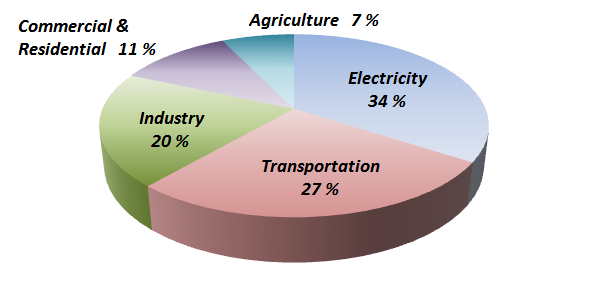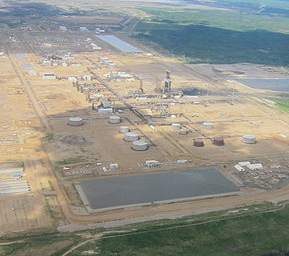RL Blogs

By Eve Harrison
Oct 14, 2012Imperial Oil reportedly aiming to spend around $100-million in order to test newly built oil sands technology. |
||
|
Imperial Oil, one of Canada’s largest petroleum companies, claims that this new infrastructure will help to reduce overall greenhouse gas output, even as the oil industry critics claim that it may end up doing more harm than good. As the EPA cites, greenhouse gas emissions are very high within the Industry category.
While the Transportation category, which consists of factors such as transport company vehicles, ships, and trains, sits at 27% of overall greenhouse gas emissions, the Oil Industry category is the second largest contributor of emissions. This category currently sits at 20% of overall emissions. Based on this numbers alone, reducing the greenhouse gas output and turning the company more green is a notable effort, as long as it is effective; wasting millions just to build reputation, however, is like throwing sand in people’s eyes.
The New Process Could Change the Oil Sands Industry The current process of oil sands extraction involves heating water into steam so that the bitumen can be melted out of the ground. The large amounts of natural gas required to convert water into steam contributes to a large amount of greenhouse gas emissions.
Imperial’s newly developed technology aims to use solvents to help thin out the heavy oil sands crude. The important takeaway here is that this new process does not require the heating up of these solvents.
This latest process is known by Imperial as a nonthermal operation. Three test wells are currently being drilled to research how well this technique works. If this nonthermal process ends up working out successfully, it will transform the current process at which 80 percent of oil sands reserves are extracted. Greenhouse gas emissions will end up being significantly reduced and Imperial says that this may changes the public’s current negative viewpoint of oil sands.
Oil Sands Still Faces Harsh Criticism from Public Despite the industry currently pushing for better operational measures within the oil sands, many fear that horrible repercussions may occur once companies are done mining in certain areas. According to a report by the Globe and Mail, many are concerned that a Lake District currently being developed in Alberta, Canada may turn into a landscape filled with toxins and oil. This Lake District, which is currently planned to consist of 30 separate lakes, is going to be built by Canada’s oil sands industry. Once companies are done with their mining practices in these areas, reports say that they are going to put water in old mining pits, some with toxins still left in them.
The 30 bodies of water being created are called “end pit lakes.” They get this name because companies can cut costs by filling these mines with water instead of dirt. Further plans regarding how large these lakes will be are discussed in a plan recently released by the Cumulative Environmental Management Association.
may take around 40 years to finally confirm that the lakes are stable for the environment.
The report also notes just how much is unknown about “tailings.” These consist of mostly sand and clay along with a large number of toxins that pose as a threat to ecosystems. 50 percent of the end pit lakes currently being planned are aiming to bury these tailings under a layer of dirty mine water and fresh water mixed together. Experts believe that this will allow the tailings to remain at the bottom of the pit and solidify while biological processes make the water above safe to inhabit. However, the report claims that scientists are still very uncertain regarding whether or not this process can work to prevent any damage to the environment.
Future Development The very first end pit lake is planned to be developed at the end of this year or at the start of 2013 by Syncrude Canada. CEMA recommends that in order to help improve the oil sands industry, further investment in science is needed, to study each lake, and technological developments need to be shared between companies within the industry to further reduce environmental damage.
| ||
|
|










